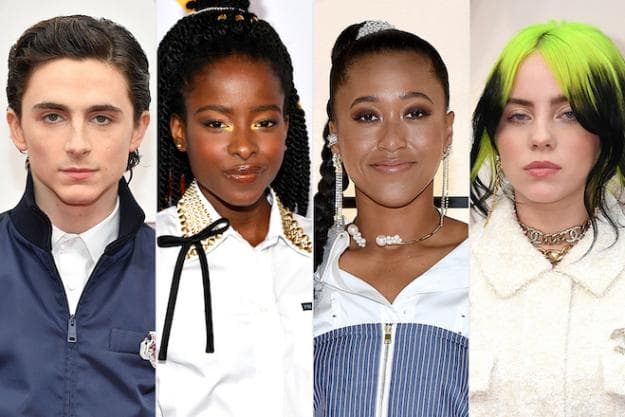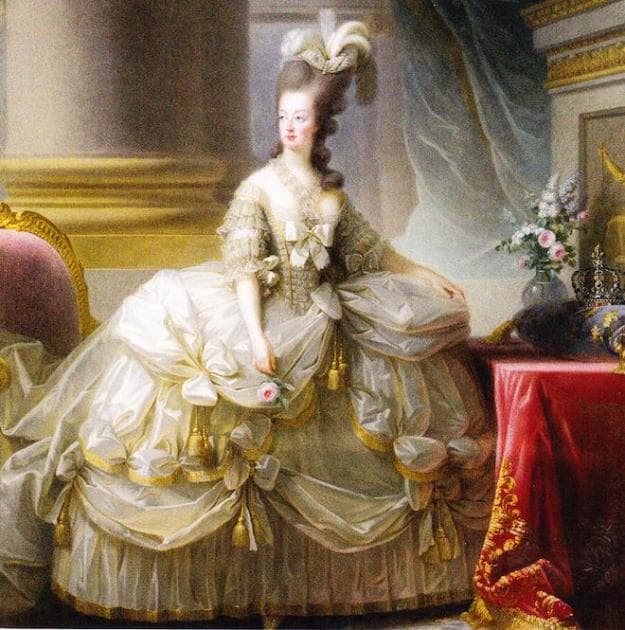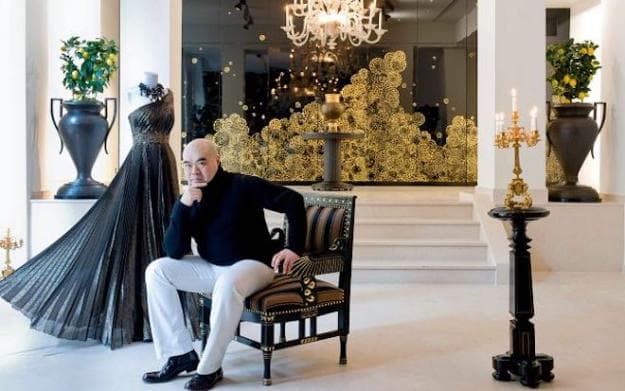
Fashion’s most extravagant ball is back once again—the Met Gala returns after being cancelled due to the coronavirus pandemic. The fashion’s equivalent of the Oscars is typically held on the first Monday of May at the Metropolitan Museum of Art in New York as a fundraiser for the fashion department of the museum. This year’s exhibition will happen on September 18 at the Anna Wintour Costume Centre at the Met and forms part of a two-part series. Part one of the exhibition is called, “In America: A Lexicon of Fashion” while part two, which will happen in 2022 is dubbed, “In America: An Anthology of Fashion”.
It has been announced that the co-chairs this year will include: Timothée Chalamet, Billie Eilish, Amanda Gorman, and Naomi Osaka; while Tom Ford, Adam Mosseri (Head of Instagram), and Anna Wintour will serve as the honorary chairs. As for the official dress code, it will be American Independence, giving the spotlight to homegrown talents. While the world has almost equated American fashion with Tom Ford, Michael Kors and Marc Jacobs, there is a growing pool of young designers that have risen up to command international attention. These include the likes of Christopher John Rogers, Telfar Clemons, Eckhaus Latta, Hanifa and others.

For a long time, how we dressed was often dictated by the four major fashion capitals of the world: Paris, Milan, London and New York. These cities reigned supreme in determining the upcoming season’s trend as they housed many of the world’s most prestigious luxury brands such as Louis Vuitton, Dior, Chanel, Gucci and others. It would be an understatement to say that these brands have a long heritage but what results from this amalgamation warrants attention. These cities have become the mecca for fashion designers; a fertile ground where creativity and innovation can be fostered and flourish.
It has been recorded that the lavish courts of the Europeans, with clothes made of premium materials such as tulle, silk, velvet, as well as elaborate embroidery and embellishment, formed the foundation of haute couture. This insatiable desire for beautifully designed clothes soon permeated through the strata of society and imbued its citizens with a deep appreciation for fashion. To those living in the fashion capitals, there is an understanding that fashion goes beyond just its utilitarian nature where the primary purpose is to just clothe one’s body or to signify wealth; but it is the ultimate expression of a person’s personal choice and the celebration of individuality. The concept of individuality is the throughline of the Western hemisphere and has attracted many emerging designers to set up their labels and contribute to the already vibrant fashion scene.

The Europeans have their storied history around the royalty and aristocrats and this propelled them to become fashion powerhouses, America was in the backwater and mainly replicated designs from their counterparts across the Atlantic ocean. It was in the second half of the 20th century that American fashion started to flourish with the rise of designers such as Bill Blass, Halston, Oscar de la Renta, Anne Klein and Stephen Burrows. This group of American designers subsequently represent the country in the famous Battle of Versailles, where they pitted against the reining “Kings and Princes of fashion” such as Yves Saint Laurent, Pierre Cardin, Emanuel Ungaro, Marc Bohan, and Hubert de Givenchy. In the end, it was the American who stole the show with their youthful approach, stunning the primarily French audience. From then on, the world of fashion took notice of America and recognised its position.
As mentioned earlier, the theme for the Met Gala is on American fashion and following this momentum, Netflix has released a miniseries recounting the career of Halston, a fashion icon that was known as the first superstar fashion designer, where he is known to capitalised on the changing styles and consumer culture in the second half of the 20th century, revolutionising fashion while also building a business empire.
While apart from the cultural and historical aspects that make these cities the go-to place for fashion, the resources available to those who want to make a name for themselves are also abundant. The leading fashion capitals have trade associations that champion the interest of the industry and to promote their country’s fashion culture to the world. In France, it is the Fédération Française de la Couture,du Prêt à Porter des Couturiers et des Créateurs de Mode (FF); the UK, it is the British Fashion Council (BFC); in Italy, it is the Camera della Moda Italiana (CNMI); and the US, it is the Council of Fashion Designers of America (CFDA). Having these organisations is crucial in safeguarding the interests of those that are part of it.
Constant innovation is also important to fashion. As much as the rich archives can provide the foundation for most designs, it is imperative that designers think outside the box. This can be achieved by using cutting-edge technology to produce a brand new type of material that not only looks aesthetically pleasing but is made with reduced carbon footprint or wastage. Increasingly, these are problems that are of importance to most consumers nowadays.
To become a fashion city, qualities such as having a supportive environment that encourages creativity and innovation, coupled with a culture that recognises the value of craftsmanship, are the ingredients needed to be conferred as a fashion city.
Taking a closer look at Singapore’s fashion industry, there are a number of home grown labels which have managed to grow and become regionally known but few managed to gain international status. To many who aren’t familiar with local designers, the island city actually has a designer who is a fixture at Paris Fashion Week. Andrew Gn, the only Singaporean designer in the official line-up, counts Hollywood celebrities and royalty as clients, boosting the reputation of the country to many internationally. Gn took the helm of Balmain’s ready-to-wear and accessories collections, working alongside Oscar de la Renta, and is the first Asian designer to head a French couture house. More recently, a group of young designers, who goes by the name, Youths in Balaclava (YIB), have also participated in Paris Fashion Week. Although not on a scale as grand as Gn, the group debuted their collection at a showroom located at Place Vendome and managed to strike deals with international retailers.

Both Gn and YIB could be considered as the odd ones out as not many local designers have had the chance to break into the international fashion scene. Objectively speaking, the fashion scene in Singapore has not been exciting due to the lack of support from the locals themselves. As Singapore does not have a rich history with regards to fashion despite being a melting pot of cultures, the people here were more concerned with bread and butter issues and only the well-to-do had the time to dress.
But times have changed and fashion has democratised allowing more people to take the first step and try out new styles. An organisation like the Textile and Fashion Federation (TaFF) is helping to “place the local fashion industry at the forefront of policy and opportunity”, its various initiatives such as The Cocoon Space provides a hub for collaboration, develop and groom local talents while its Bridge Fashion Incubator is a 16-week incubator programme, supported by the Singapore government, sets out to groom potential startups “to refine and validate their products, services or solutions, and commercialisation strategies”. Singapore is taking steps, albeit small ones, to position itself more conspicuously in the global fashion scene. The country doesn’t lack talents but it needs to be more aggressive in its marketings of these talents. With a robust creative space, it will attract greater international recognition and brands will be attracted to the country, paving the way for its ascent to becoming a fashion capital.

Looking at China, we can see some similarities as well. The country was primarily looking towards the West for fashion styles but growingly, the focus has shifted to local designers who are able to bring in the “Chinese” authenticity—a recognisable style that is distinguishable from that from Paris, Milan, New York or London. The domestic market in China alone can “legitimise and publicise the creativity of designers domestically,” after which it would garner the interests of the international press and propel its status to rival the established fashion capitals.
Becoming a fashion capital will require much coordination from the different players in the industry. The top four fashion capitals, they are still able to reign because of the deep synergy that was cultivated between the stakeholders. But with the rise of other capitals such as Shanghai, Seoul and Tokyo, perhaps an undercurrent is happening and consumers are looking for fresh new cultural aesthetics that are different from the past.
The post The Secret Ingredient For a Successful Fashion Capital appeared first on LUXUO.
from LUXUO
No comments:
Post a Comment